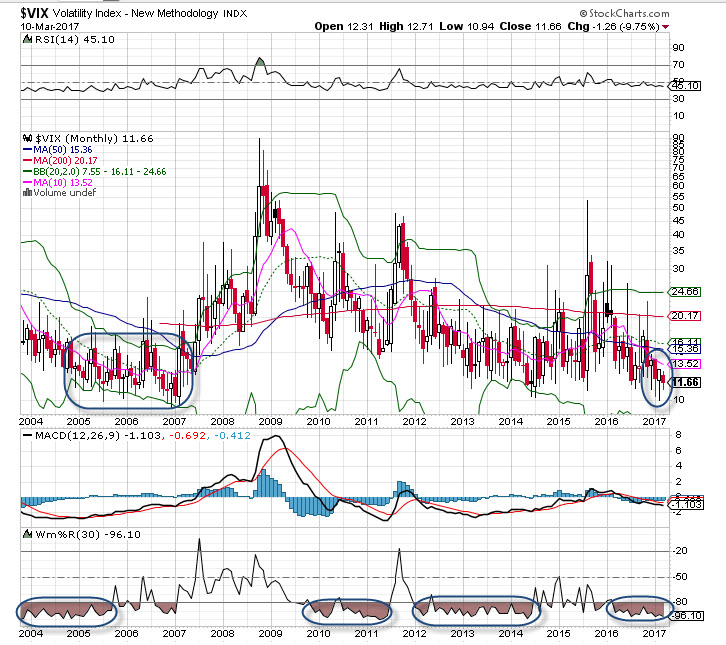The volatility index, or VIX once again closed under 12% last Friday. It has hovered in the range of 10-13% for the entire year of 2017, and really collapsed following the Presidential election, from a high in the low twenties. That seems eons ago, right? And with this low volatility comes frustration for those sitting on the sidelines waiting to get involved with the stock market. Volatility is compressed right now, but of course that will change at some point, but we'll not try and time it.
The ideal set up for those waiting is to buy a significant pullback or correction. Yet, we have not seen anything of the kind for months and nothing really is forecasting that to happen anytime soon (of course, there are always surprises around every corner - so nothing is ever permanent). But what if this low volatility lingers, and the 'perfect' buy setup never comes to you? Then it's just a waste of time, and the high opportunity begins to weigh on your mind. You can never get time back.

However, the stock market has had such a good run over the past four months and if we missed that strong surge then our minds think, 'okay, if I get in now then I'm going to be late and the market is sure to fall'. I'm sure many of you have felt that way, it's a natural feeling when we have risk aversion taking over our mind. We hesitate, wait too long and then take the leap at exactly the wrong moment.
Historical trends of the VIX shows the index trends lower over time and stays low. Look at the chart and see the %R stochastic at the bottom. How many spikes up and long lasting do you see? How many times has the VIX trended to oversold and stayed there for long periods of time?
But who really knew the S&P 500 would rise some 18% in just four months? Unless you had a crystal ball, then nobody could have timed it exactly right. Yet, we did have some clues and the volatility index was one of the best we have found. Price action was also a very good hint as well, but the VIX had been falling and not penetrating resistance. Now, the VIX is concerned the 'fear gauge', and looking at the chart we see little fear since the election. In fact, any spikes up in volatility were sold aggressively (market bought up).
The VIX has been flattening out without much trend. As a measure, when the volatility index stays low it means stocks CAN rise. Note, I didn't say WILL rise - a big difference, as there are no guarantees. As the markets have undergone a bit of pullback over the first half of March (since the big rise on March 1) volatility has remained flat. This may signal more upside to come when the correction is over, and so far only a 2% or so down has been accomplished.
Lastly, some wonder if volatility will ever rise again. Of course it will, markets run in cycles. After a very long period of low volatility from 2005-07 the VIX surged to heights never seen when the financial crisis roared. Three years of flat volatility then BOOM -- talk about compression! This current period of low volatility is only a few months long! Some worry about the lack of opportunity to play both sides of the trade. Those chances will come and some will make large sums of money up and down - but trying to time it is futile. Wait for the signs, like a rising trend in volatility. You won't miss it. For now, play the current trend.